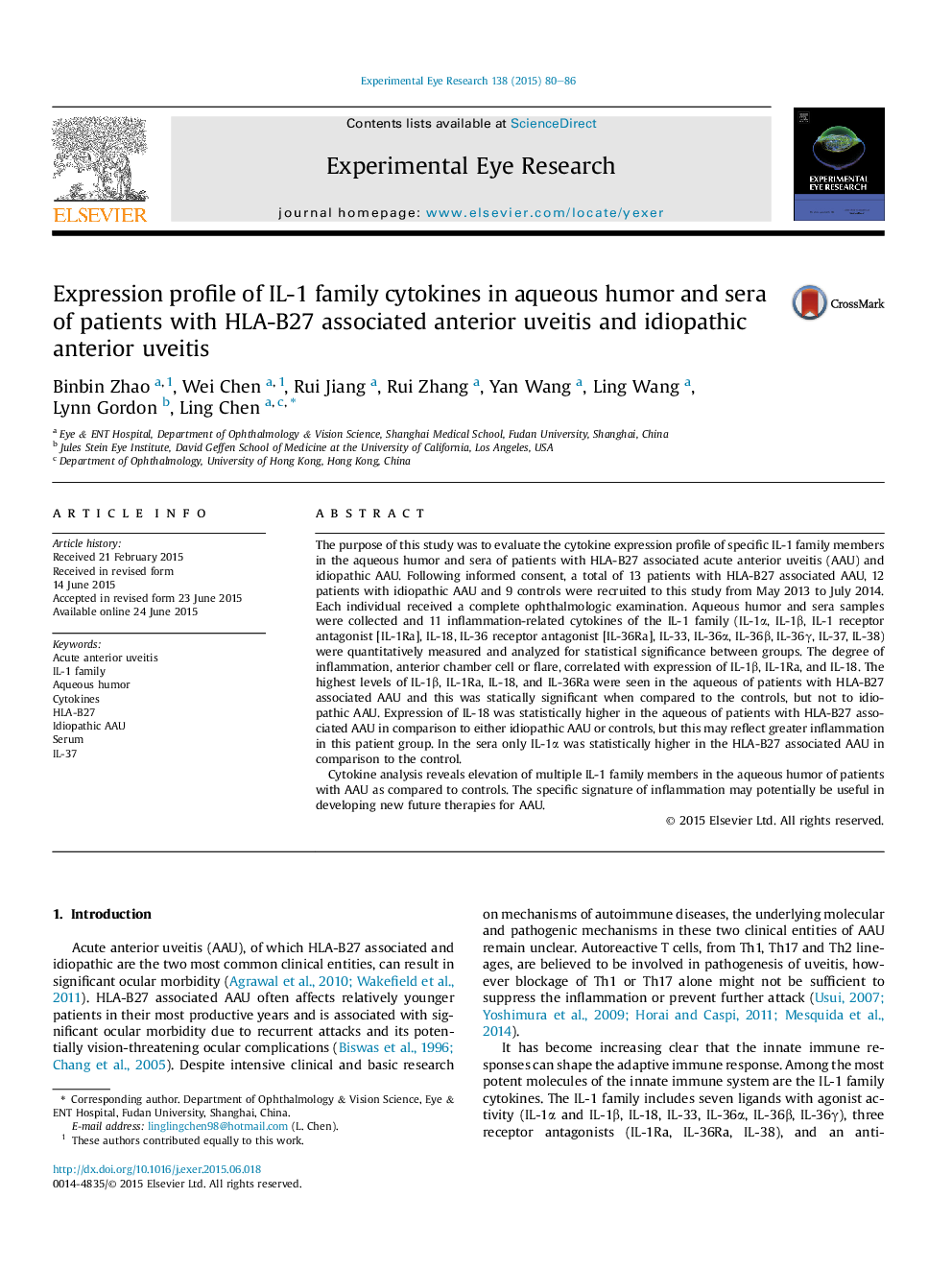| Article ID | Journal | Published Year | Pages | File Type |
|---|---|---|---|---|
| 6196565 | Experimental Eye Research | 2015 | 7 Pages |
â¢We demonstrated higher concentrations of multiple IL-1 family cytokines in aqueous humor of AAU.â¢We reported different IL-1 cytokine expression pattern between HLA-B27 associated AAU and idiopathic AAU.â¢We revealed the involvement of IL-37 in the pathogenesis of HLA-B27 associated AAU.
The purpose of this study was to evaluate the cytokine expression profile of specific IL-1 family members in the aqueous humor and sera of patients with HLA-B27 associated acute anterior uveitis (AAU) and idiopathic AAU. Following informed consent, a total of 13 patients with HLA-B27 associated AAU, 12 patients with idiopathic AAU and 9 controls were recruited to this study from May 2013 to July 2014. Each individual received a complete ophthalmologic examination. Aqueous humor and sera samples were collected and 11 inflammation-related cytokines of the IL-1 family (IL-1α, IL-1β, IL-1 receptor antagonist [IL-1Ra], IL-18, IL-36 receptor antagonist [IL-36Ra], IL-33, IL-36α, IL-36β, IL-36γ, IL-37, IL-38) were quantitatively measured and analyzed for statistical significance between groups. The degree of inflammation, anterior chamber cell or flare, correlated with expression of IL-1β, IL-1Ra, and IL-18. The highest levels of IL-1β, IL-1Ra, IL-18, and IL-36Ra were seen in the aqueous of patients with HLA-B27 associated AAU and this was statically significant when compared to the controls, but not to idiopathic AAU. Expression of IL-18 was statistically higher in the aqueous of patients with HLA-B27 associated AAU in comparison to either idiopathic AAU or controls, but this may reflect greater inflammation in this patient group. In the sera only IL-1α was statistically higher in the HLA-B27 associated AAU in comparison to the control.Cytokine analysis reveals elevation of multiple IL-1 family members in the aqueous humor of patients with AAU as compared to controls. The specific signature of inflammation may potentially be useful in developing new future therapies for AAU.
